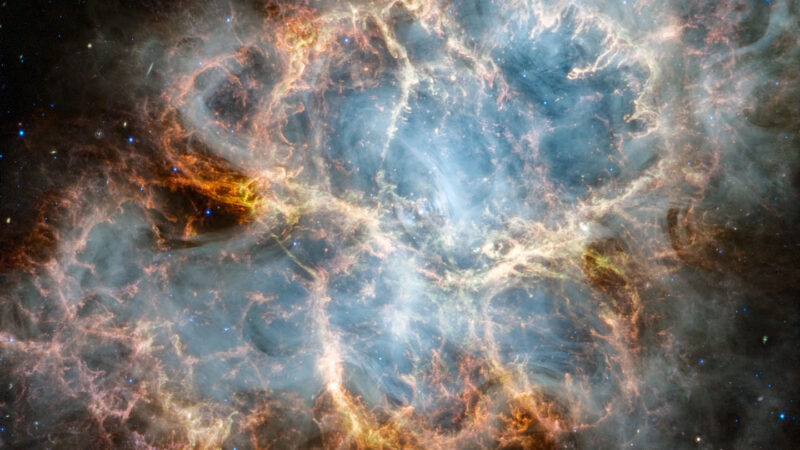
atmosphere: The envelope of gases surrounding Earth, another planet or a moon.
atom: The basic unit of a chemical element. Atoms are made up of a dense nucleus that contains positively charged protons and uncharged neutrons. The nucleus is orbited by a cloud of negatively charged electrons.
atomic: Having to do with atoms, the smallest possible unit that makes up a chemical element.
black hole: A region of space having a gravitational field so intense that no matter or radiation (including light) can escape.
celestial: (in astronomy) Of or relating to the sky, or outer space.
celestial object: Any naturally formed objects of substantial size in space. Examples include comets, asteroids, planets, moons, stars and galaxies.
circuit: A network that transmits electrical signals. In the body, nerve cells create circuits that relay electrical signals to the brain. In electronics, wires typically route those signals to activate some mechanical, computational or other function.
cosmic: An adjective that refers to the cosmos — the universe and everything within it.
cosmic rays: Very high-energy particles, mostly protons, that bombard Earth from all directions. These particles originate outside our solar system. They are equivalent to the nucleus of an atom. They travel through space at high rates of speed (often close to the speed of light).
cosmos: (adj. cosmic) A term that refers to the universe and everything within it.
disrupt: (n. disruption) To break apart something; interrupt the normal operation of something; or to throw the normal organization (or order) of something into disorder.
DNA: (short for deoxyribonucleic acid) A long, double-stranded and spiral-shaped molecule inside most living cells that carries genetic instructions. It is built on a backbone of phosphorus, oxygen, and carbon atoms. In all living things, from plants and animals to microbes, these instructions tell cells which molecules to make.
electric charge: The physical property responsible for electric force; it can be negative or positive.
electronics: Devices that are powered by electricity but whose properties are controlled by the semiconductors or other circuitry that channel or gate the movement of electric charges.
magnetic field: An area of influence created by certain materials, called magnets, or by the movement of electric charges.
muon: A type of unstable subatomic particle. Most on Earth formed when cosmic rays interact with atoms in the atmosphere. As leptons, muons belong to the same class of particles as the electron. Their mass, however, is roughly 200 times bigger. Muons tend to be short-lived. It tends to survive only 2.2 microseconds before it decaying (transforming) into an electron and two types of neutrinos.
particle: A minute amount of something.
planet: A large celestial object that orbits a star but unlike a star does not generate any visible light.
proton: A subatomic particle that is one of the basic building blocks of the atoms that make up matter. Protons belong to the family of particles known as hadrons.
pyramid: A monumental structure with a square or triangular base and sloping sides that meet in a point at the top. The best known are those made from stone as royal tombs in ancient Egypt.
speed of light: A constant often used in physics, corresponding to 1.08 billion kilometers (671 million miles) per hour.
star: The basic building block from which galaxies are made. Stars develop when gravity compacts clouds of gas. When they become hot enough, stars will emit light and sometimes other forms of electromagnetic radiation. The sun is our closest star.
sun: The star at the center of Earth’s solar system. It is about 27,000 light-years from the center of the Milky Way galaxy. Also a term for any sunlike star.
supernova: (plural: supernovae or supernovas) A star that suddenly increases greatly in brightness because of a catastrophic explosion that ejects most (or sometimes all) of its mass.
volcano: A place on Earth’s crust that opens, allowing magma and gases to spew out from underground reservoirs of molten material. The magma rises through a system of pipes or channels, sometimes spending time in chambers where it bubbles with gas and undergoes chemical transformations. This plumbing system can become more complex over time. This can result in a change, over time, to the chemical composition of the lava as well. The surface around a volcano’s opening can grow into a mound or cone shape as successive eruptions send more lava onto the surface, where it cools into hard rock.
